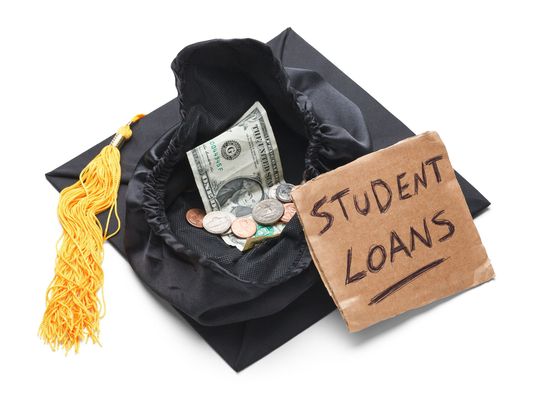
Facing more than $80,000 in student loan debt, Tiffany Tatafu did what thousands of other student loan borrowers do: She searched for answers on her phone.
The single mother of two had heard that as a public employee, she could be eligible for student loan forgiveness. She’d landed a job as a student support coordinator at Arizona State University after earning a master’s degree in education in 2017.
Tatafu called one of the first listings that came up in her search.
A representative at the company pushed her to sign up for its service, which cost $50 per month for three years on top of her normal student loan payments. They told her it was the only way she’d qualify for forgiveness, Tatafu recalls.
“They definitely made it sound like I had to go through them or I would not be in the program,” Tatafu says. “So they lied.”
How third-party companies prey on your debt
Tatafu’s experience is a textbook example of how third-party companies prey on vulnerable student loan borrowers.
“That is precisely the same pattern we have seen with countless other borrowers,” says Danielle Tarantolo, an attorney at New York Legal Assistance Group.
So-called debt-relief companies lure borrowers with exaggerated promises of forgiveness. At best, they charge fees to enroll borrowers in free federal loan programs like income-driven repayment plans. At worst, they take borrowers’ money and do nothing to help.
In Tatafu’s case, the debt relief company – called Student Relief Dept. – enrolled her in Pay As You Earn, a legitimate federal income-driven repayment plan that caps borrowers’ monthly payments at 10% of their income and offers taxable forgiveness on the balance remaining after 20 years. (Student Relief Dept. did not respond to multiple requests for comment.) Borrowers who work for the government, a nonprofit or a public school, as Tatafu does, may be eligible for tax-free forgiveness after 10 years through Public Service Loan Forgiveness.
Based on her $45,000 annual income and family size of three, Tatafu’s monthly payment was set at $120. For one year, she made those payments to the debt-relief company, plus an extra $50 for the company’s monthly service fee.
After a year, the company notified Tatafu that it was time to recertify her income. The Department of Education requires that borrowers who are on income-driven plans submit proof of income annually.
After submitting Tatafu’s paperwork, the company said her new monthly payment would be $0. Tatafu was confused. Her income hadn’t changed, so why had her payment dropped?
“They wouldn’t give me any answers,” Tatafu says. “It was just, ‘Aren’t you happy it’s $0?’”
But Tatafu had a feeling there’d been a mistake. After many calls to the debt-relief company and her federal student loan servicer, she began piecing the story together.
How to sign up for federal repayment plans on your own
It turns out that Tatafu didn’t need the debt-relief company’s services in the first place.
Despite the company’s pitch, signing up for federal repayment plans isn’t impossibly difficult. Borrowers can submit the income-driven repayment paperwork to their federal student loan servicer on their own – for free.
“This is not like hiring a tax preparer to prepare your taxes,” Tarantolo says. “The income-driven repayment form is a few pages long, and you can fill it out in a matter of minutes.”
To make matters worse, the debt-relief company incorrectly reported Tatafu’s income to her loan servicer during the recertification process, which led to her payment dropping to $0. On income-driven repayment, it’s possible to have a legitimate $0 monthly payment if your income is low enough. That wasn’t the case for Tatafu, who worried that a mistake could derail her path toward loan forgiveness.
A final wrinkle complicating Tatafu’s situation: The debt-relief company contracts out the handling of monthly payments. Even if she cancels the debt relief company’s services, she still owes fees to the company handling the payments for the rest of her three-year contract or she risks damaging her credit.
How student loan borrowers can protect themselves
Millions of Americans have student debt. If you’re among them, here’s how to avoid falling for a similar scheme.
- Don’t pay upfront or monthly fees to a third-party company offering student loan forgiveness.
- If you can’t afford your federal student loan payments or are pursuing Public Service Loan Forgiveness, enroll in an income-driven repayment plan through your loan servicer.
- Beware of third-party companies that use pressure tactics, make promises of fast loan forgiveness or advertise on social media – those are red flags for student loan scams.
If you’re involved with a student-debt-relief company and want to get out, call and ask to break your contract. If they decline, you may need to consult a lawyer to avoid damaging your credit. Find one through the National Association of Consumer Advocates or your local legal aid organization.


